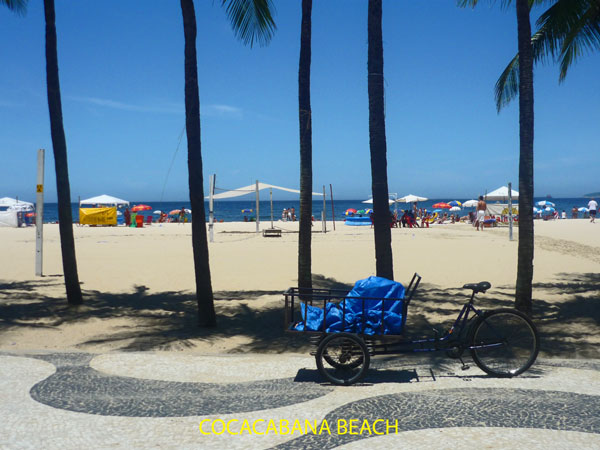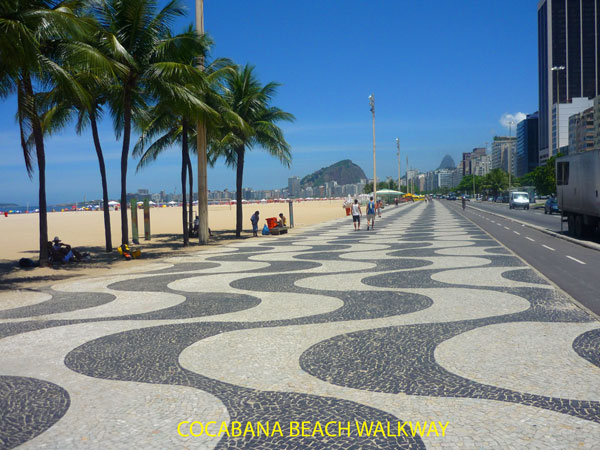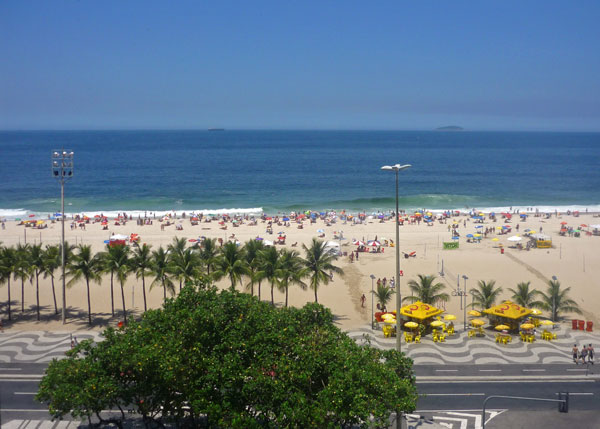
TO SEE A 10 MINUTE YOUTUBE VIDEO ON CARNIVAL, CLICK HERE
This is the last look out my room on the 7th floor of the Leme Othon Palace Hotel.
Brazil - Day Seven, February 27th
This is my last day of site seeing in Rio. I decided to see some of the ecology of Brazil by taking a tour boat out to some of the islands. The boat takes passengers to the waters near 3 islands for a bit of snorkeling or swimming. My purpose is to be on the water, with food, other people, and of course, a little samba music. We visited small remote islands around a naturally preserved island called Ilha Grande which lies south of Rio near the cost.. We did not go to the island itself which is said to have hiking trails (belonging to the Tupinamba Indian tribe who once lived there), waters falls, shelter bays, brooks, and beaches. No cars are allowed on this island.
The trip by bus was 5 bumpy hours to the village of Angra, where we then boarded a boat for the tour. The first island had a beach which required diving off the boat to reach. The second island had no beach, so passengers dove off the boat into the fish filled waters near the island. The last island had a landing dock which allowed me to go ashore.
See the videos and photos below.
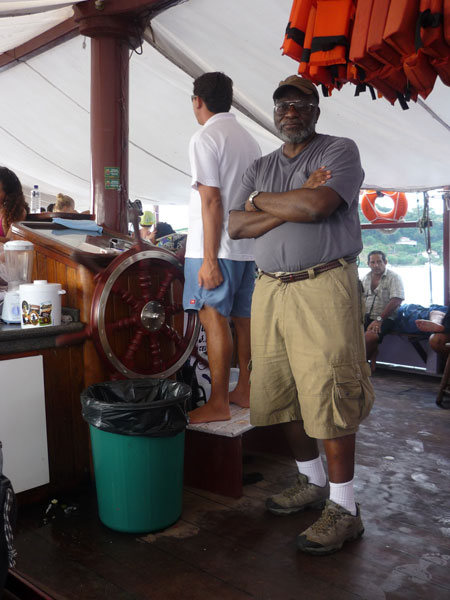
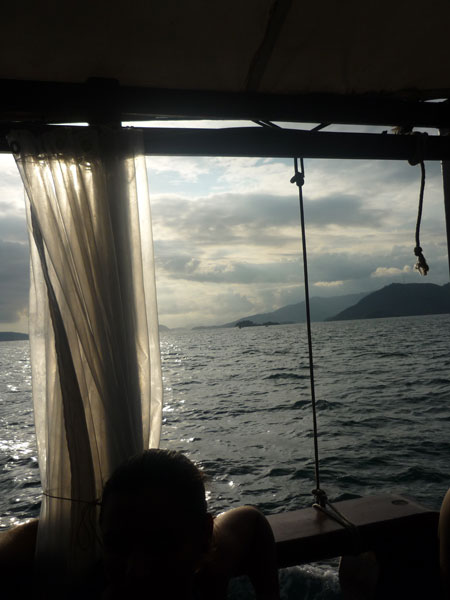
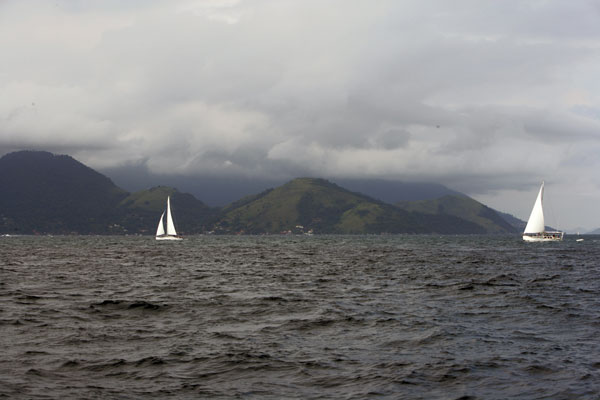
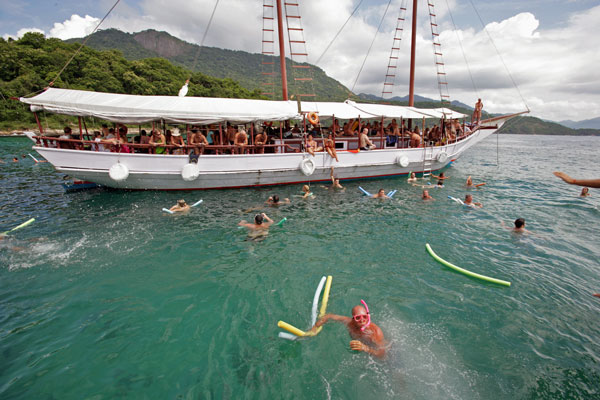
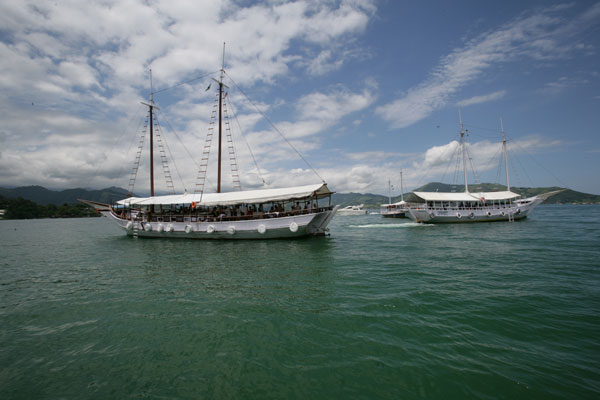

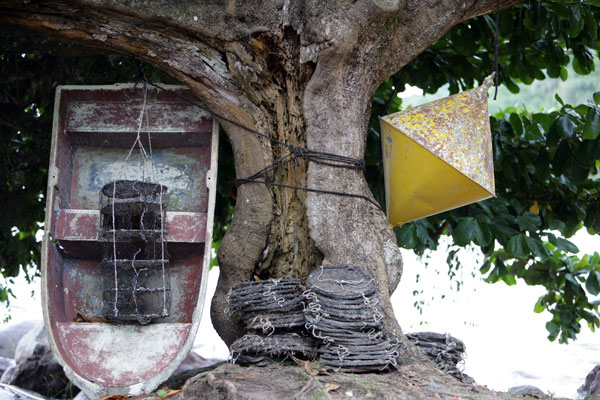
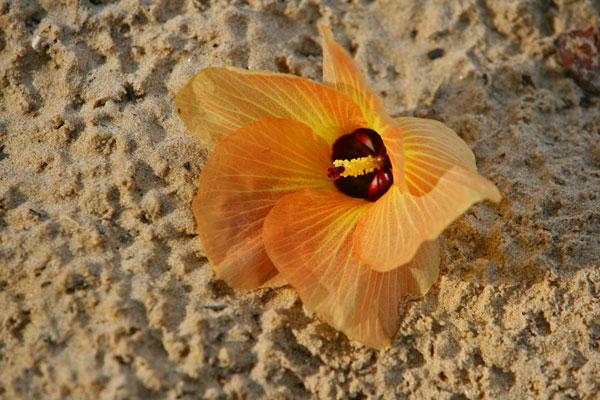
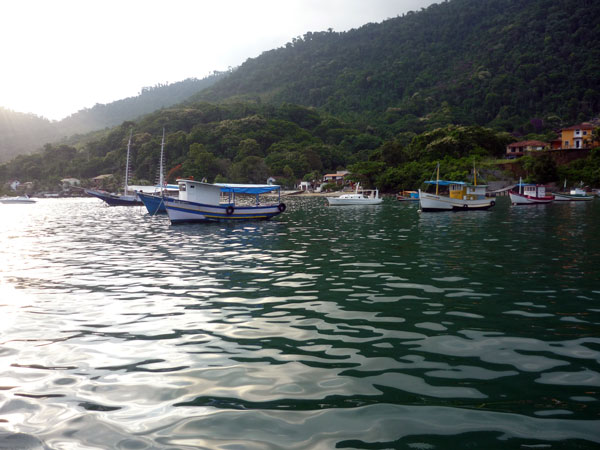
Tour Boat Departure
Shore View From Tour Boat
Brazil - Day Six, February 26th
This day is a not a photo day. I had planned a trip to one of the many "favelas" (or slums) around Rio De Janeiro. One of the largest is called Rocinha. It has almost 300,000 in habitants. It's estimated that there are almost 1 million people in Rio's favelas. These shanty towns are violent, crime ridden, with extreme poverty and almost no public infrastructure. Favelas have been in Rio from as far back as 1897, when soldiers returning to Rio to recieve payment in land grants set up camp outside the city after being spurned by their government. The plight of these residents, mostly of african and indian decent, had been ignored and not acknowledged until the 1990's.
The favelas are a source of creativity for Rio, however. The people of the favelas invented the samba, and are the creative force of what we know as the Carnival. The government has for the last twenty years attempted to integrate the favelas into greater Rio as it now recognizes the importance of its citizens. There have been movies made of the plight and promise of the favelas of Rio which have made the world sit up and take notice. Many groups and organizations abound in and around the favelas. No one thinks Rio's hip, laid back, musical beat, and cosmopolitan reputation came from the Portuguese.
The music here is full of rhythm. The art is colorful and modern. The people are friendly and warm. This is what I wanted to see in the midst of the decrepitude and dilapidation.
Below is a photo of Rocinha by N. Cabana. This image is part of Travel-Images.com.
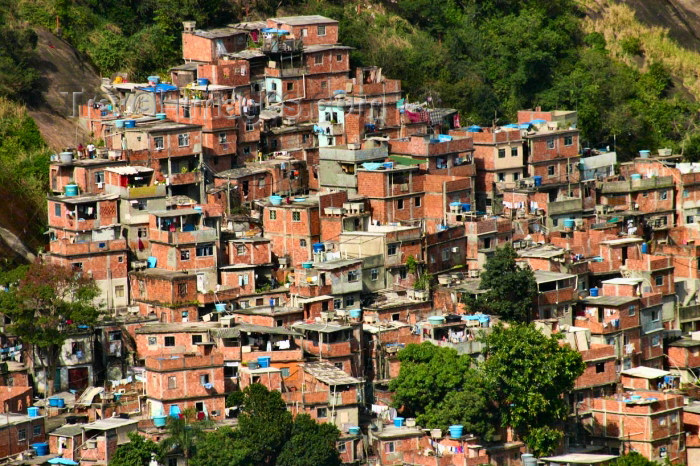
Brazil - Day Five, February 25th
TO SEE MORE CARNIVAL PHOTOS CLICK HERE
Today or should I say tonight I will be going to a massive Carnival Parade at a place called the Sambodromo. It is a parade avenue with spectator seats designed especially for this annual competitive event where 12 Samba Schools compete for the best presentation. Each neighborhood has its own samba school which prepares for 6 months to participate in this parade. Each year in school must create an original theme and theme some for their event.
Many of the neighborhoods are favelas (slums around the city) which have coalesced into strong groups supported by people, businesses, etc. The estimated cost for each school is about a million US dollars!! This emphasizes how important this event is for the people of Rio De Janeiro
There are approximately 5000 participants in each samba school. Anyone can join a samba school including tourists, however, as long you are willing to put in some practice and learn the samba theme song for that year. The parade for each school must be between 70 and 85 minutes longs.
The Parade is done over the span of 2 days with 6 schools each day. The parade starts at 9:00 PM at night and we the spectators get to watch this event squeezed into concrete seats that remind me of the old Roman coliseums. The benchlike setup involves sitting on a ledge for your butt with your feet on another lower ledge that the person in front of you sits on. It is very cramped, and many persons get a knee in the back if they lead back, since there is no backrests. I was told this was designed by the same guy who designed the capital city of Brazilia, but that's another story.
The parade at 80 minutes per participant lasts 480 minutes plus the time between events. That's about 8 hours! Which means the events ends at about 5:00 AM in the morning. Needless to say only the strongest supporters sit through the whole thing. I "wimped out" after the third presentation and that was 1:00 AM in the morning.
See the video and photos below. To see more Carnival photos click here.
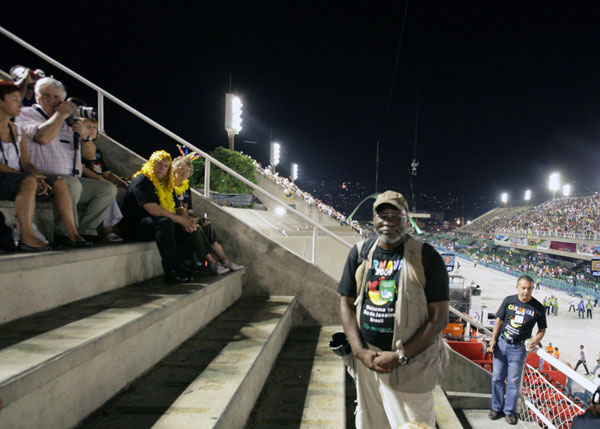
This is me in the stands at the SamboDromo just before the parades begin
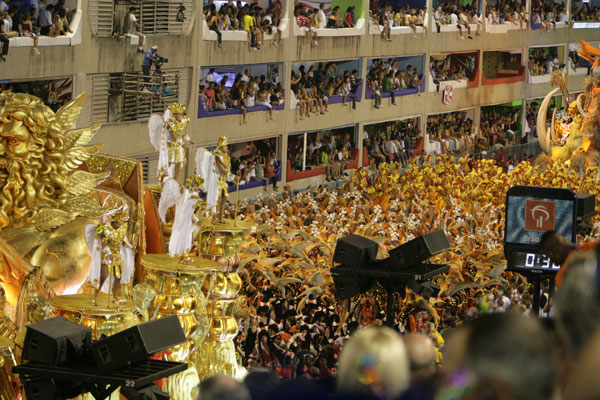
This is first of six samba schools who are at the SamboDromo on this the 2nd day.
360 View of Sambodrome Before Parade
The First Samba School Parade Group
More of the First Samba School Group
Brazil - Day Four, February 24th
Today is Sunday and a rest day for me. I slept in late as compared to yesterday when I slept for for an hour and half. I spent what remainder of the day near the beach front in of my hotel and explored the area, said to be a more conservative and affluent area in Rio. I found an ATM which I could not operate since instructions were only in Portuguese. The nearby bank was closed due to the Carnival event.
On the previous evening stroll I also found that this major street area near my hotel (half a mile) was a red light district. I saw at least 4 upscale strip clubs with young ladies of questionable virtue in front of a few. It seemed all very controlled and safe, however. So I concluded nothing to be panicked about.
I pretty much just watched the sunset on the beach. I tried the local "eau de cocoa" drink, which is nothing more than the water from a coconut. It's a fresh cocoanut which they machete open and insert a straw. It is all very "tropical", but the taste is an acquired taste; mostly water with a hint of coconut.
This evening, a very loud samba band gave a 3 hour concert on the beach in front of my hotel. I couldn't' t take nap so I left the hotel and joined the fun. I saw a small crowd enjoying the moment and people danced, some brought their children (dressed in their Carnival costumes) and just enjoyed the music.
See the videos and photos.
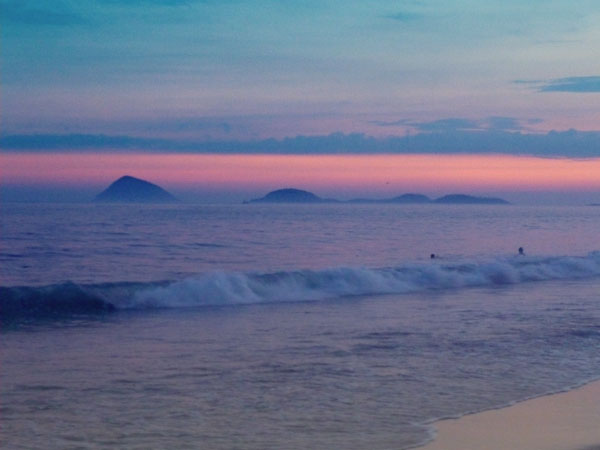
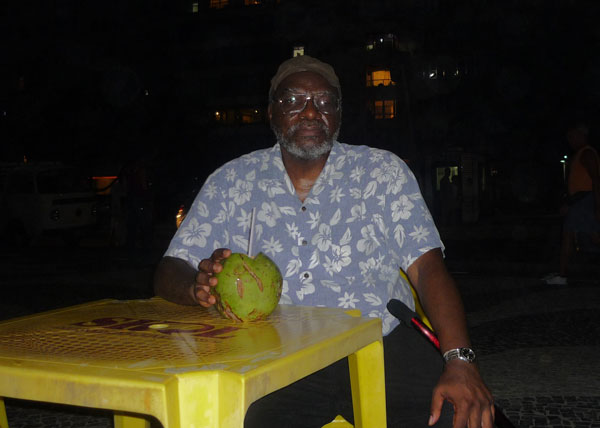
A Sunset at Cocabana Beach
Samba Band Begins to Play at Cocabana Beach
People Dancing to the Music of the Samba Band
Brazil - Day Three, February 23rd
Today, I went to see and photograph the most spectacular view of Rio De Janeiro. It's called Sugar Loaf. It consists of two peaks varying in height. Both peaks are accessed by European styled cable cars.
You can see all of Rio and the surrounding communities from Sugar Loaf. There are bays and shipping lanes all over the area which, when gathered together make Rio one of the most beautiful cities in the world. There is a heliport atop the lower peak. Those wanting an quick aerial view of Christ Redeemer statute, and the beaches of Rio can get a 15 minute ride for R$160 (about $80). The only problem is that the constant landing of and takeoff of the helicopter disturbs the serenity of the area.
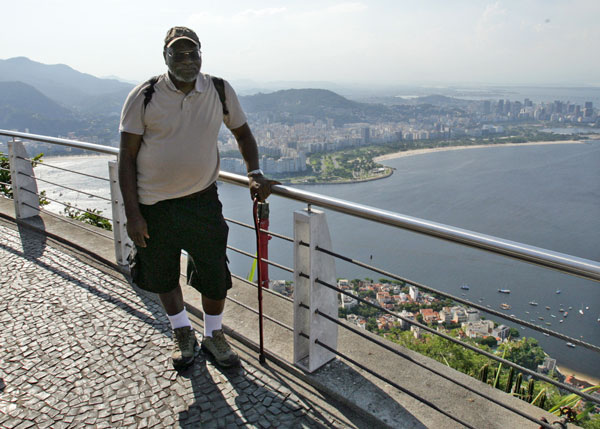
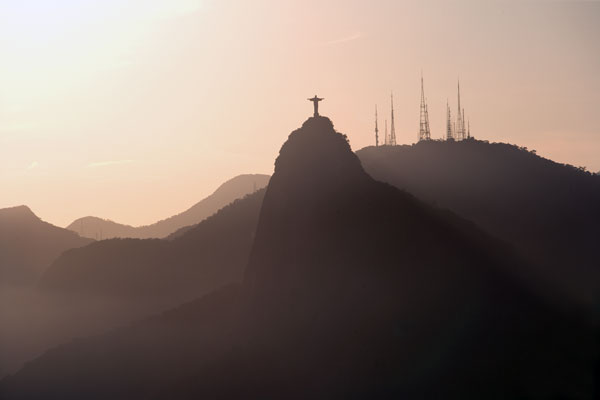
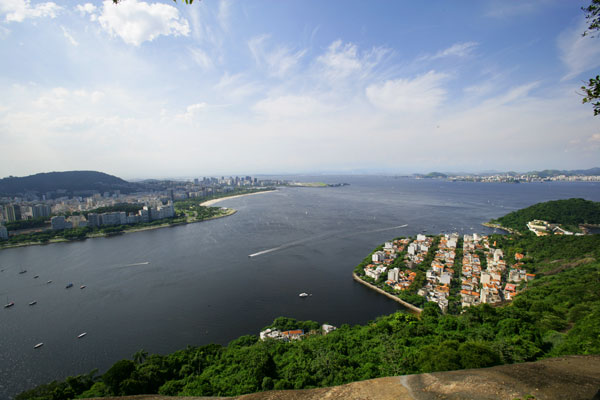
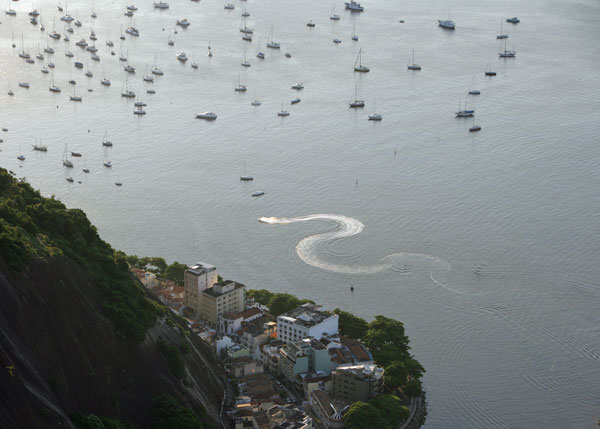
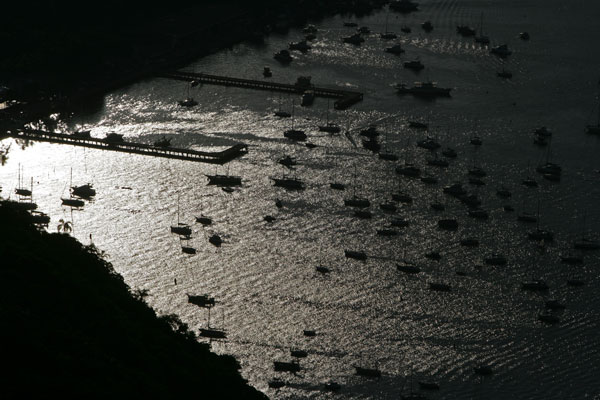
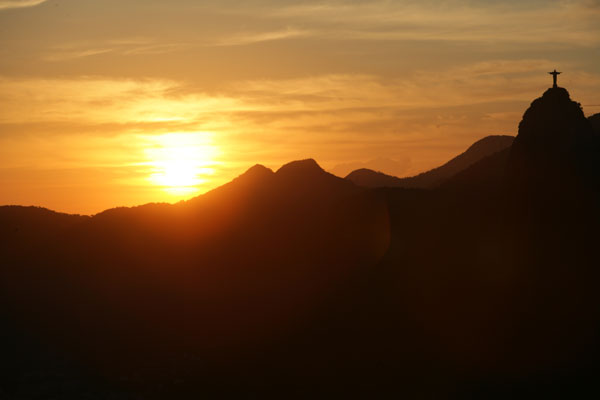
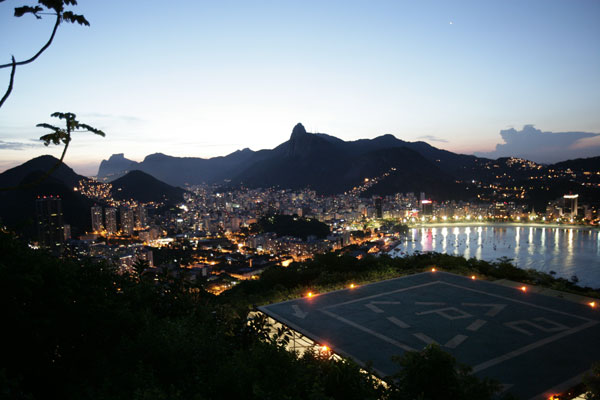
View of the Cable Car at Sugar Loaf
Brazil - Day Two, February 22nd
Today I spent the morning exploring the famous Christ Statue which lies perched on a mountain called Corovado overlooking Rio De Janeiro 2328 feet below. It's actually called Cristo Redemptor (Christ the Redeemer), is about 125 ft. high, and weighs 1145 tons. I have a photo looking down on the city from there.
After getting back to the hotel from the trip and resting a bit. I ventured across the street to Copacabana Beach for some atmosphere shots and to watch the sun set behind the ocean. It resulted in colorful evening and night shots.
Finally for the evening I decided to have dinner, Brazilian style, and see a show. The meal was one of those meals where course after course of spit roasted beef, pork, lamb, chicken hearts, etc. are brought to your seat. The meat is sliced off the spit and on to your plate. This goes on until everyone is satiated.
From there we went to see a colorful and unique Brazilian Mulatto dance troupe which showcased many dances from Brazil. This included everything from Brazilian-African martial arts and gymnastics to modern Samba dances and Carnaval costume displays. See the dancers in the photo and in the videos.
See still photos and video movies below:
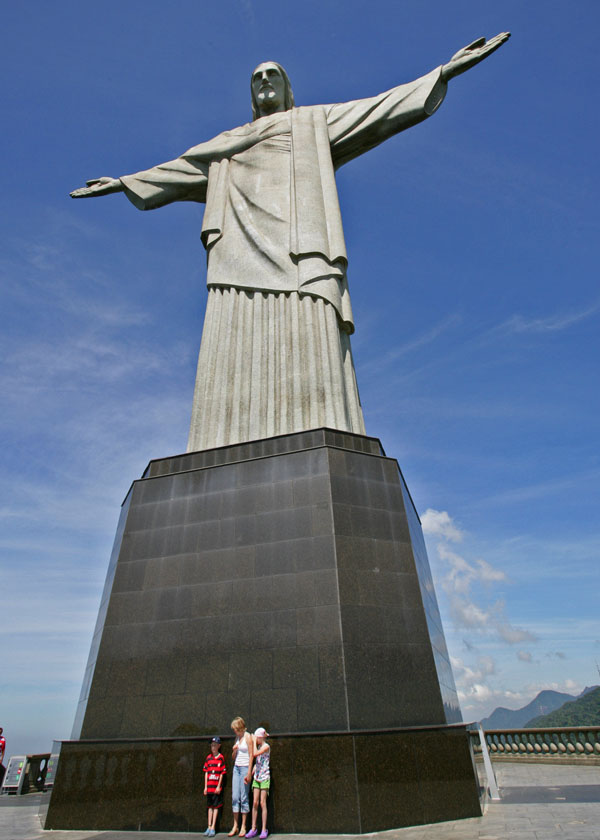
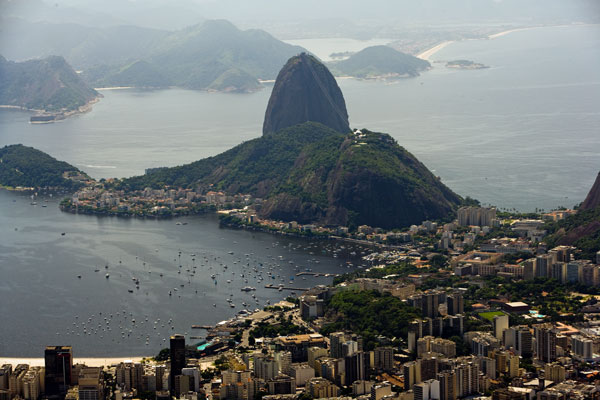
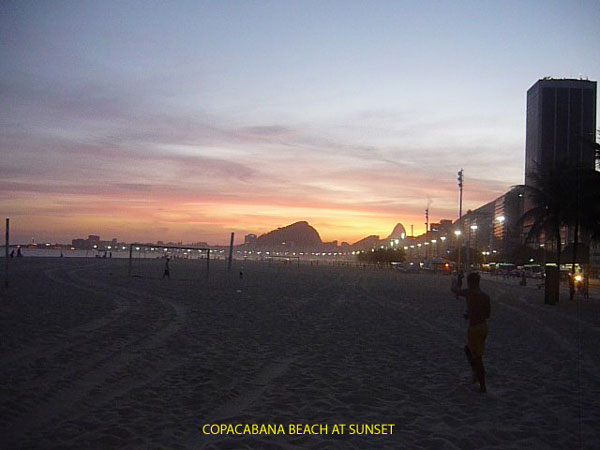
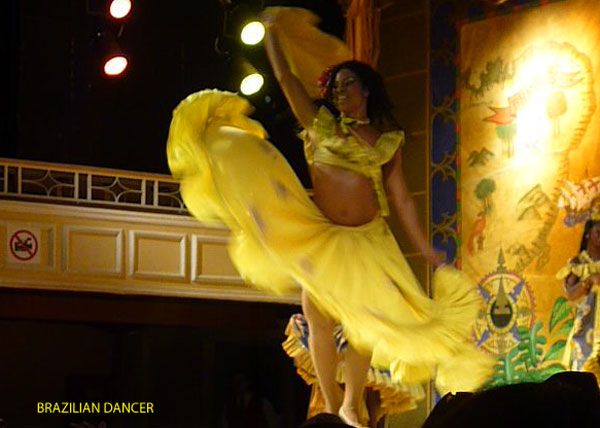
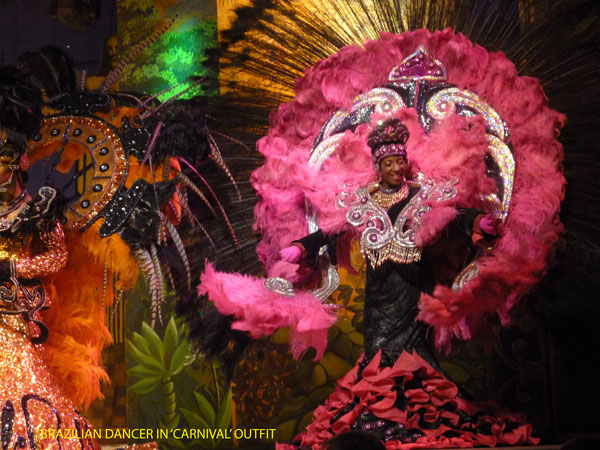
Samba Dance Troupe at Theatre
Sambo Dancer in Yellow at the Theatre
Martial Arts Dancers at the Theatre Part 1
Martial Arts Dancers at the Theatre Part 2
Cocabana Beach at Night
Brazil - Day One, February 21st
Hello or l should I say “Ola” as in Portuguese. Portuguese looks like Spanish because in many cases they have common words but often the pronunciation is different.
The plane ride was very long. The flight from Detroit to Rio should take about 13 hours but with weather delays and layovers it was more like 21 hours in airports and on the plane. We landed in town at 9:30 AM. I left my house about 9:00AM Detroit time, including the +2 hour time difference, that’s still quite a bit of time.
My hotel is called the Leme Othon Palace. It’s located in the portion of Rio called the Sol Azul (the Sun Coast) overlooking the famous Copacabana Beach. I can see the beach from my room. The weather is warm and sunny today; it must be easily about 85 degrees F.
I took a brief stroll to the beach, which is across Avenue Atlantica from my hotel. I kept to the side walk for the time being and just took a few photos. See some below.
